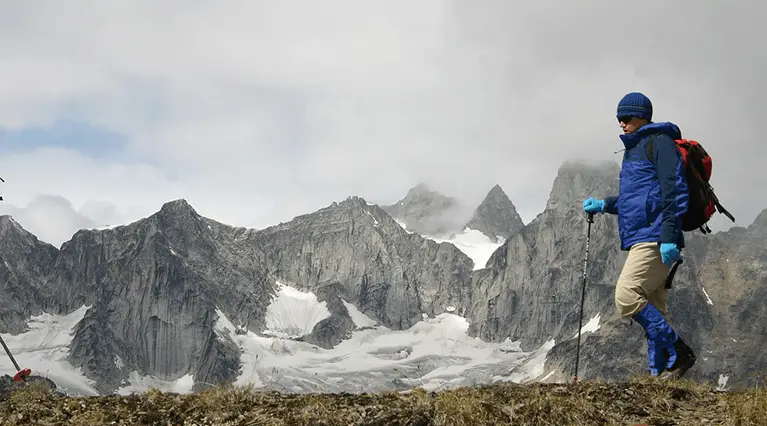Last modified on September 13th, 2020 at 10:49 pm
Essential Tips For Winter Hiking
Your first winter hiking adventure will be one to remember, in a good way. Here are the essential tips for winter hiking.
1. Dress in Layers
If you happen to live in a cold or snowy area, you already know the importance of dressing in layers. This is particularly important when hiking in colder weather, as temperature levels can vary from place to place, especially with changes in elevation. Having a variety of clothes will help you manage your body temperature and remain comfortable. Generally, it’s a good idea to put on a layer of long underclothing, a light fleece or softshell jacket, and water-resistant pants. Its also not a bad idea to have a shielded jacket (either down or synthetic), fleece trousers, as well as a water-resistant jacket in case of bad weather.
You should always have on thick, winter-weight socks, considering that your toes are the top place you’ll feel cold. You can also consider compression socks for hiking. It’s also a smart idea to have two layers of handwear covers or mittens, one for insulation as well as one for waterproofing.
Dressing in layers will help keep you dry and warm, as well as give you the ability to remove layers as needed.
2. Start Early – Start Easy
When planning your very first winter season camping trip or hike, be practical about the range and trouble of the trail. While it could be a cinch to do a twelve-mile loophole in summer conditions, you could face ice or deep snow on the same path during the wintertime. Likewise, several access roadways to your favorite trailheads are shut and unplowed over the winter, which can add substantial mileage to your trip.
Start early so you can end early. The sunsets significantly earlier in winter months, so you’ll run out of daylight quicker than you think. Plan for this to avoid getting lost or hurt.
3. Bring Safety Equipment
There are a couple of basic items that every winter hiker ought to bring in in the event of an emergency. Besides basic trekking gear, you should always have a route map (one that isn’t only on your phone), a basic first aid kit, a compass, a swiss army knife or multi-tool, hand warmers, as well as a headlamp. For a day trek, it’s a great idea to break up some of the larger safety items amongst multiple members of your group.
4. Check The Weather
While this might appear like an obvious step, it’s that you know the forecast for the entire day. Consider the rainfall, wind rate, avalanche records, and daytime hours. If you just the weather of your day based on how it is in the morning, you could get stuck in a rain or snowstorm later in the day.
5. Purchase Good Gear
While no two packing checklists are the same, there are some standard items that every winter walker needs to be prepared to purchase.
The following products are what you should be spending extra money on for quality gear:
Crampons or snowshoes, water-resistant pants and jacket, knee-high gaiters, waterproof boots, an insulated or heated coat, a light-weight knapsack, trekking poles, a camp stove, hats/gloves, as well as safety glasses or wrap-around sunglasses.
With these tips, it is important to prepare, and plan for the worst while hoping for the best in your winter hiking. Do not overexert yourself on your first hike, and remember to bring a friend or make sure someone knows when you will be back.
I have been a nature enthusiast since I was a small girl. My background is in online marketing and website development. It only makes sense to merge my love for nature with my skills in online marketing to help spread awareness, and appreciation for Our Beautiful Planet.




